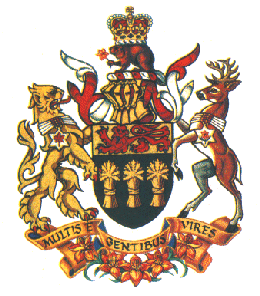| PROVINCIAL FLAG
| 
| Saskatchewan's official flag was adopted in 1969. It features the provincial shield of arms along with the floral emblem, the western red lily. The flag's upper half is green, representing Saskatchewan's northern forests; the lower half is gold, symbolizing the southern grain areas. This is the reason why this website is written in green and yellow!
|
| FLORAL EMBLEM
| 
| In 1941, the western red lily was selected as the official flower of Saskatchewan. This lily grows in moist meadows and semi-wooded areas and stands out brilliantly with its flaming red blossoms against a natural green background. The western red lily is a protected species.
|
| BIRD EMBLEM
| 
| The sharp-tailed grouse, also called the prairie chicken, is one of Saskatchewan's most popular game birds. It was selected as the provincial bird emblem in 1945.
|
| PROVINCIAL TREE
| 
| In 1988, the white birch was adopted as the official tree of Saskatchewan. This hardwood tree is found across the northern three-quarters of the province. Typical uses for the wood include lumber, plywood, veneer and fuel.
|
| PROVINCIAL TARTAN
| 
| The Saskatchewan provincial tartan has seven colours: gold, brown, green, red, yellow, white and black. It was registered with the Court of Lord Lyon King of Arms in Scotland in 1961.
|
| PROVINCIAL MINERAL
| 
| Sylvite (potash) is Saskatchewan's official mineral. The Saskatchewan potash industry is the largest mining industry in the province and is the largest producer and exporter of potash in the world. Reserves of Saskatchewan potash are huge and are expected to last for hundreds of years at current rates of production. Over 95 percent of the potash produced in Saskatchewan is used for fertilizer purposes.
|










 times since October 14, 2000.
times since October 14, 2000.